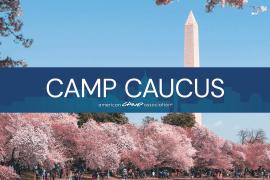Each year, hundreds of thousands of children attend youth programs provided by institutions of higher education across the country, with the bulk of these programs taking place during the summer. The programs, activities, and services can cross multiple campuses, colleges, and administrative units ranging from academic, recreational, and environmental programs. Tracking and adherence to policies, procedures, and regulations of youth programs at a college or university is a complex task.
While summer is months away, program planning begins now.
This is the time to review required processes and procedures at your institution and communicate out any updates and/or reminders to all stakeholders involved in the delivery of these programs. The following is a list of important information that should be communicated to the institution’s community early in the planning process to be sure a safe environment is being promoted for all children served on your campus. This list is not all-inclusive, and individual, specific institutional requirements should be included when appropriate.
Policy Reminders or Updates
Communicating updated policies, procedures, and/or regulations is imperative. There are many external governing bodies in the higher education environment that can impact the delivery of youth programs. Cleary and Title IX are just two examples that are important to remember. In addition, many states periodically update the reporting requirements for suspected child abuse and background clearance requirements. Working with the appropriate departments or units and then communicating to your entire campus community should be built into an annual review process.
Program Approval and/or Registration
It is critical for an institution to have a master list that identifies the where and when of all youth programs. With the high staff turnover in the college/university environment, it is important that all individuals who are managing youth programs are aware of any required processes for program approval or registration. Annual reminder emails to deans, chancellors, or unit leadership to be distributed in their respective areas is on tactic that can be used to be sure approval and registration requirements are communicated.
Hiring Program Staff
This is a particularly important topic this year. Hiring struggles are widely known in the camping industry. The American Camp Association addressed the challenges during the Virtual Staffing Summit that was held in November of 2021. Further support is being offered through the Staffing Summit Follow-Up: Session 1 to be held in January 2022.
This is also a good time to review and/or distribute the 14 Questions to Identify Potential Hiring Risks at Camp that can be used in the staff interview process. While no process is foolproof, these questions can improve the quality of the process.
Training and Education
Educating youth program staff on the specific local, state, and institutional policies regarding how to report suspected child abuse is critical. Equally critical is delivering this information as precamp or preprogam training. An early review of the educational content should be done to ensure that the material is current and reflects the most up-to-date internal and external requirements.
Now is also a good time to review staff orientation content. Does it address how to handle situations that are current trends in the youth programs? A review of the Lessons Learned from ACA's Crisis Hotline in 2021 is beneficial in preparing staff for possible situations that could present themselves in the 2022 youth program season.
Health and Environmental Safety Information
The health and safety of the children we serve is always a top priority. Therefore, it is important to stay up to date and informed of your institution’s COVID-19 requirements. Requirements related to masking, vaccination, and safety plans is a moving target and additional changes should always be anticipated.
Check out ACA’s COVID-19 – Resource Center for Camps. ACA will continue to monitor the situation and will update their web pages as needed.
As we all move toward 2022, it’s important to celebrate all the good that was done in the previous year. We also need to look to the upcoming youth program season and continually plan for improvements that will benefit those we serve. Communication is a key aspect in the process. Using several delivery platforms to provide updates will strengthen the messages and increase the overall quality of our programs.
Sandy Weaver, MS, is the youth program compliance specialist at Penn State University. Her position is in the Office of Ethics and Compliance, and she is responsible for coordinating compliance with the Pennsylvania Child Protective Services Law and university policies that impact employees, volunteers, and minors who participate in a variety of university youth programs across the Commonwealth.
Photo by Dilok Klaisataporn / iStock / Getty Images Plus
The views and opinions expressed by contributors are their own and do not necessarily reflect the views of the American Camp Association or ACA employees.




